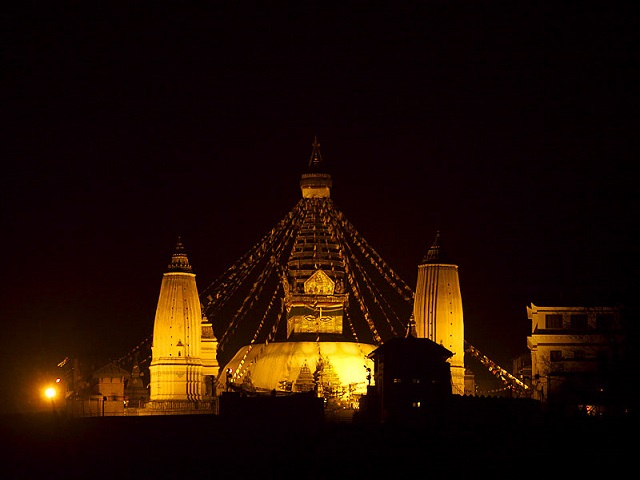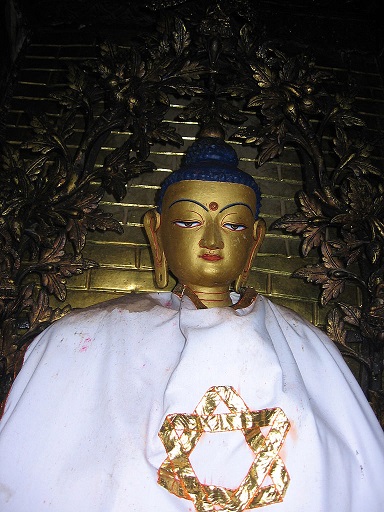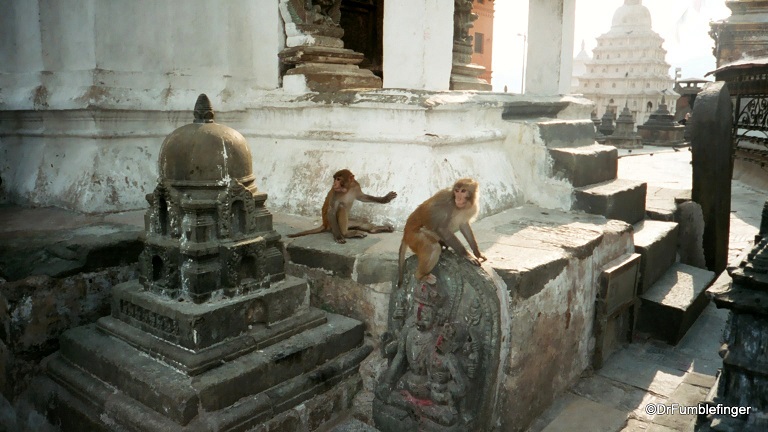
Swayambunath Stupa Temple
The Monkey Temple of Nepal
The Swayambunath Stupa Temple is also known as the “Monkey Temple” because of the large number of (mean-spirited) monkeys. They have all but taken over this complex (and are said to be “holy monkeys”).
Swayambunath is an ancient complex atop a hill in the Kathmandu Valley, Nepal. Most approach it via a long uphill climb of 365 steps (one for each day of the year). You will pass thousands of Buddhist prayer flags that set the atmosphere for the complex ahead. Each morning before dawn, hundreds of Buddhist and Hindu pilgrims ascend these steps. They begin a clockwise walk around the stupa at the centre of this ancient site.
The Swayambunath complex dates to at least the 5th century AD (some say a temple built in the 3rd century preceded it) and consists of a huge Buddhist stupa and an assortment of shrines and temples. The complex has statues of Buddha and prayer wheels, and a small commercial village adjoins the temple and offers shops, restaurants, and hostels.
The large stupa has a base with a rounded dome (which contains many ancient artefacts) and a cubical structure above, which has Buddha’s eyes and eyebrows painted on all sides. Between the eyes, the number one (in Devanagari script) is painted in the style of a nose. I believe all aspects of the complex are symbolic, but I don’t understand them well enough to write about them with any authority.


Although the site is primarily Buddhist, it is revered by Buddhists and Hindus. Numerous Hindu monarchs have paid homage to the temple. It was a fascinating place to see and certainly a recommended destination.
Story and photos by Dr Fumblefinger
His website is http://www.travelgumbo.com/home
